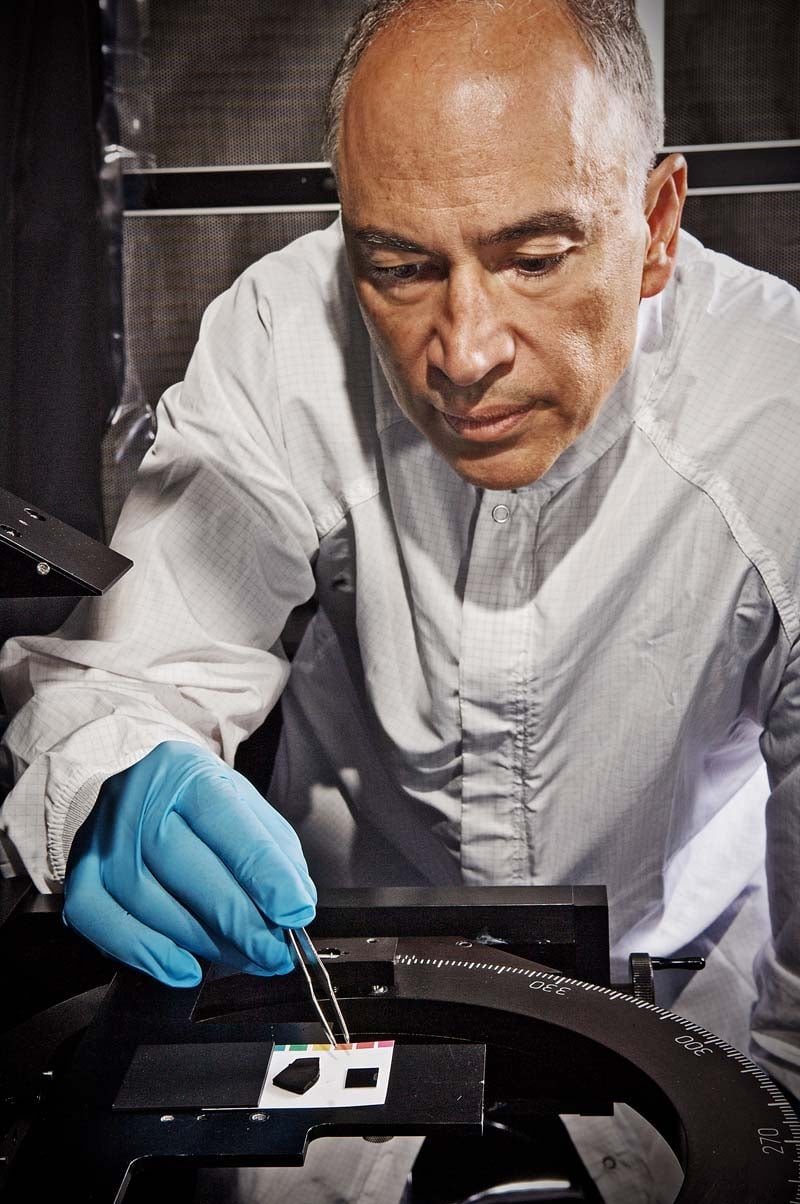The world’s blackest color belongs to one person—and he’s Instagramming his victory
To the wrath of his fellow artists, Anish Kapoor effectively confirmed this week that he has gained the exclusive rights to Vantablack, the blackest shade of black ever made. The carbon-based substance absorbs 99.96% of light that hits it, according to Dazed and Confused magazine. In theory, looking at it is like staring into a black hole.


To the wrath of his fellow artists, Anish Kapoor effectively confirmed this week that he has gained the exclusive rights to Vantablack, the blackest shade of black ever made. The carbon-based substance absorbs 99.96% of light that hits it, according to Dazed and Confused magazine. In theory, looking at it is like staring into a black hole.
While Kapoor has declined to comment publicly on his copyright, he posted a non-verbal update on his Instagram today, March 3. To reassert his brand, he captioned the all-black field: “Kapoor Black”
Kapoor worked with UK-based nanomaterial research lab Surrey NanoSystems to develop the carbon-based pigment. He has been using the material exclusively since 2014, but the reality of not having access to the blackest black is just hitting his fellow artists now.
“Personally, I find this type of monopoly rather absurd and stifling,” Belgian artist Frederik De Wilde tells Quartz in an email. Others, like painter Christian Furr, who was barred from using Vantablack for a series of paintings, echo the sentiment.
Vantablack is not the only superblack
The quest for the blackest of all blacks is not unique to art. In 2007, a team at NASA began work on a super black nanotechnology to make instruments more sensitive. Last year, a sample of that super-black coating was sent to the International Space Station for testing in space.

The thing to remember is that the coveted super-black substance is actually not paint but very tiny tubes composed of carbon, explains former NASA optical physicist John Hagopian, who now runs a startup developing carbon nanotechnology for engineering purposes. The super black is actually “grown” in the lab, the matte black effect coming from seeing a dense patch of these tiny carbon nanotubes which absorbs nearly all light.
“Surrey NanoSystems demonstrated their results years later,” says Hagopian. “I am not minimizing their process or contributions, but we stand on the shoulders of those who came before us. Carbon nanotubes have been grown for many years, and we merely tuned the process to our needs.”
Since 2010, Hagopian has also been collaborating with De Wilde to develop “Nanoblack,” another super-black substance that’s only a hair lighter than Kapoor’s, at 99.9% light absorption.
For artists itching to use the scarce super-black substance, Hagopian cautions that applying the material is not as easy as picking up a can of paint. The process involves a gas mask and a special enclosure for the “complex chemical vapor deposition,” and inhaling the fine carbon-based material can be as hazardous as inhaling asbestos.
Unlike Kapoor, De Wilde and Hagopian say they are not interested in keeping their super-black material for themselves.
“Yves Klein patented the paint formula, but never patented the color,” points out De Wilde, referring to the French conceptual artist best remembered for a vivid shade of ultramarine now called “IKB” or International Klein Blue.
“Buying exclusivity of using a color is rather ridiculous,” he adds. “It’s most likely an institutional reflex, an expression of a fear: the desperate desire to own art.”